The Cornell Lab Bird Academy › Discussion Groups › Joy of Birdwatching › Activities: Exploring Bird Habitats
-
Activity 1: For my first habitat that I visited I went to a lake. There I saw the usual things I would expect to see, primarily water birds such as, Great Blue Heron, Great Egret, Little Blue Heron, Wood Ducks, Double-crested Cormorants, Anhingas, Black-bellied Whistling Ducks, Common Gallinule, White Ibis, Limpkin, and Belted Kingfishers. The pond is surrounded by a paved side walk and then wooded area and swampy land so there are multiple habitats in the area. I saw quite a few other birds that are not so dependant on the water, like Eastern Phoebes, Northern Flickers, Pileated Woodpecker, House Wrens, Carolina Wrens, Northern Cardinals, Blue-gray Gnatcatchers, Northern Mockingbird, and a Red-shouldered Hawk. For my second habitat I went to an open field that had been recently mowed. It has wooded area around it and is near a small lake. Focusing on only the open field area I saw lots of Palm Warblers, Northern Cardinals, House Finches, Blue Jays, Carolina Chickadees, White-eyed Vireos, Tufted Titmouse, Brown Thrasher, and Northern Mockingbird. Since I do a lot of birding and visiting various birding hotspots in my area, the findings in each of these areas where not a surprise to me. As you can see, there are some birds that can be found in both areas since the water being present does not deter the birds who like to be in wooded areas or open hunting area. However, you will not typically find the water birds where there is not water, with exception to flyovers. Activity 2: I enjoyed looking at and comparing the hotspots both in Arizona and in England. Much like my own habitat comparisons one was a habitat with water and one without. I could see that the results had similarities to my own results in that, there were water birds at the locations with water but also other birds that can be found in habitats without water. All areas had some birds in common that were non-water birds.
-
Activity 1: Since I've started birding, I've mainly visited a local hotspot that has a couple ponds with some shrubs and a few trees. I always see the usual group of Mallards in the ponds, and sparrows among the shrubs. According to Merlin ID, one of the most common types of birds in my area is the Woodhouse Scrub Jay, but I had yet to see one. I decided to try a different hotspot near me that is more forested than the ponds and shrubs I've spent most of my birding time in. Well, I immediately saw about five Woodhouse Scrub Jays at the more forested spot. I also saw a Brown Creeper and a White-breasted Nuthatch that got added to my life list. I was happy to have the experience of finding different habitats that are still so near. Activity 2: Looking at the species list for Roger Road WRF, there are some waterfowl listed (Mallard, American Wigeon). There must be some body of water at that location. Mt. Lemmon's species list lacks any waterfowl, but lists hummingbirds, flycatchers, and warblers. I would guess Mt. Lemmon is a high desert habitat with scrubby shrubs.
-
Activity 1 : Yesterday I went birding on Randall's Island here in NYC. I visited 3 spots on the Island. The first spot, known as Little Hellgate, was a small salt marsh with some some minimal trees that run alongside the water. In this area I watched yellow rumped warblers flying around in branches chasing insects, pine siskins and house finches perched in the top of the trees, a juvenile black crowned night heron fishing in the shallow water, and a double breasted cormorant swimming for fish. The second location I stopped at were the ballfields. This area was open and grassy and was abundant with different species of sparrows and some palm warblers. The last area is known as Bronx Kill and is a small inlet where I saw Canada Geese and Mallards resting in the shallow water before they began the next part of their migration.
-
Activity 1: I am fortunate that the place where I live has multiple habitats; a stream, a brushy wetland area, a forested area with coniferous and deciduous trees and a scrubby meadow. In the scrubby area I have purposely let wild plants go to seed and I call it my living bird feeder. Right now it is home to a large group of goldfinches that are here all day everyday. There are also three kinds of sparrow. Phoebes and wrens love to hunt insects in the scrubby meadow. In the summer, before the flowers faded it was frequented by many hummingbirds. Right now, in the forested area I am seeing woodpeckers, nuthatches, chickadees, brown creepers, vireos, warblers, and titmouses.
-
Activity 2: Reading the species list for Roger Road, Tucson AZ it is obvious by the number of waterfowl, grebes, shorebirds, gulls, cormorants, herons, ibis and their allies that there is a body of water there: and judging by the presence of vireos, woodpeckers, waxwings etc there must be some trees as well. Indeed the satellite imagery on e-bird maps reveals a green oasis with ponds. An interesting thing I learned is that the Sweetwater Wetlands was constructed in 1996 to retain and reclaim secondary effluent and filter backwash from the Roger Road wastewater treatment plant. It seems that if you build it they will come! the Mt. Lemon species list suggests an upland, forested habitat, again, confirmed by the satellite image.
-
As I peruse my neighborhood I see a plethora of Chipping Sparrows as well as the same feeder suspects such as Black-Capped Chickadees, Tufted Titmice, Mourning Doves. Venturing out a little further I had the privilege of seeing a Brown Thrasher and a Northern Mockingbird perched on top of a house going through its variety of sounds. When I float the river I get to see Blue Herons, Eastern Kingbirds, and Kingfishers. Sometimes I spot an Eagle and plenty of Osprey!
-
Activity 1: I've kept lists of birds in my suburban backyard (feeders) and a nearby wooded park along the river. Being a beginner, I was surprised to see the same birds in both locations. I think of my feeder birds like pets and hadn't expected to see them "in the wild." There were a few new birds near the river, most notably the flocks of Canada Geese this time of year. I've selected two more spots to explore later this week, both an hour from my home in different directions: Green Spring Garden Park in Alexandria VA and Caledon State Park in King George VA. I've been studying the eBird lists and especially the bar charts (which I find to be extremely helpful). If I'm lucky, I might see a new bird (kinglet? towhee? warbler?) at Green Spring, and Caledon is famous for its bald eagles. Green Spring is a smallish park in a developed suburban area while Caledon is old growth forest in a rural area along the Potomac River. The two locations share the same common birds, but I hope I have time to find a few differences.
-
Activity 1 (1). I visit my feeders and I see Red-Winged Blackbirds, Cardinals, Black Capped Chickadees, Red and White Breasted Nuthatches, and I can't even get to naming them all! (2). We have a marsh near our house and it has Mallards, Canada Geese, Red-Winged Blackbirds, Common Grackles, Goldfinches, American Robins, European Starlings, and more!!! (Plus some Kingfishers...)
-
Activity 1: Another trip: I visited Irvine Regional Park in Orange, CA. Park of the park is grassy with oak and eucalyptus trees; the other part is arid, shrubby, and wilder. On the wild side: CA Quail, American Kestrel, a Harris’s Hawk (later learned it had escaped from a falconer!), three Red-tailed Hawks, Acorn Woodpeckers (I usually see them in the oaks on the grassy side of the park), and many others. The grassy area included Indian Peafowl/Hens and chicks, Wood Ducks, Mandarin Ducks, Red-crowned Parrots, Egyptian Geese and goslings, a fledgling Barn Owl, Oak Titmouse, and others. A great day for birding!



-
Oops. My narrative got separated from the picture below. One more time. Yesterday I visited Mile Square Regional Park in Fountain Valley, CA (Orange County). I saw some Orange-cheeked Waxbills (pictured below) foraging with Pin-tailed Whydahs. Both are African birds that have naturalized in Southern California. In one eucalyptus tree I saw a Downy Woodpecker, Yellow Warbler, Western Tanager, House Wren, Wilson’s Warbler, Orange-crowned Warbler. Today I visited the San Joaquin Wildlife Sanctuary as I had heard that three Stilt Sandpipers had dropped in. They had! Very rare to observe them in our state, except at the Salton Sea. In one pond I observed American Avocets, Black-necked Stilts, Northern Shovelers, Western Sandpipers. Many shore birds pass through here on their southward journey.
-

-
Activity 1: I live in the northern part of Los Angeles. In my condo complex on the greenbelt between condos I have observed Hummingbirds, as well as a Black Phoebe who visits and hunts around the same time everyday. I have a Eucalyptus tree nearby and saw and heard a Nuttall Woodpecker. In the Spring the Western Tanagers migrate through and Love the Eucalyptus. They are loud and busy. You can often see flashes of yellow while they forage in the upper part of the tree. I also noticed the appearance of a Red Tailed Hawk when the Tanagers were around. I was quite surprised that I would find any birds in this sliver of green! In Contrast, about 45 minutes away I was bird watching in Ventura. I saw a Juvenile Black Crowned Night Heron in the marina perched on a boat line, watching the water below. There were several Grackles looking for food near the dining areas. On the beach I observed the Long-billed Curlew using his long beak to search for food. There were numerous Hermanns Gulls with the beautiful orange beak.
-
Activity 1: I live in the Washington, D.C. area so I went down to Rock Creek Park. I was at the creek when I spotted a Belted Kingfisher skimming over the creek. I continued on to a wooded pond where I spotted a Green Heron catching some minnows.
-
Activity 1: where I go biking, there are two different habitats: forested and wetlands/shorelines - and very different types of birds are found in each one. In the wetlands/shorelines, I’ve spotted osprey, cormorants, kingfishers, herons, gulls, a great egret and common terns. In the forested area, the birds are very different. I’ve spotted American goldfinches, sparrows, and cedar waxwings. Definitely I can see the difference in what these birds prefer in terms of habitats.
-
Activity 2. The birds at down house were more forest or open habitat birds and the birds at the nature preserve were more water fowl and shore birds.
-
Looking at the checklist for Roger Road, Arizona, I was struck by the variety of water birds that appeared. That part of Arizona I expected to be dry. Many of the birds listed were what I would expect. Then there were different ducks, the Greater White-fronted Goose, Long- billed Dowitcher, Least Sandpiper listed as high counts. It turns out that this is the location of Aqua Caliente Park and Sweetwater Wetlands Park, major bird watching hot spots. High bird counts for Mount Lemmon were not surprisingly birds that like conifer forests, pine and oak woods as habitat. Some of these birds are the Yellow-eyed Junco, Pine Siskin and the Yellow-rumped Warbler. Mount Lemmon turns out to be the highest elevation in the Santa Catalina Mountains. It is known for hiking in the summer, skiing and is an amazing bird hot spot. Arizona sounds like a beautiful place to visit and a great bird watching destination. Such a diverse landscape.
-
Activity 1: At the local conservation area I spotted at least three distinct habitats. In the wooded area, I spotted a pileated woodpecker. In the pond, I spotted a mute swan. In the open area, I caught quick glimpses of small songbirds, but wasn’t able to distinguish them by their songs / calls. One day I’d love to be able to identify birds by their vocalizations. I woke up in a tent in Algonquin Park this summer and there was a choir outside of my tent. Would be great to identify them! Activity 2: I noticed there were Turkey vultures at Mount Lemmon but not as Roger Road. I’m sure that’s just the tip of the iceberg though.
-
Activity 1: I decided to compare river mouth at the beach (aquatic habitat) and some bushes on the side of the road in the abandoned farm fields (scrub-shrub habitat). Aquatic habitat is full of visible and countable birds generally the size of a pigeon or bigger; waterfowl, wading birds and shore birds. With the help of a camera and Merlin ID application I could identify around 24 bird species. For example, comparing my picture of a bird in flight and pictures in Merlin app helped me figure out that my bird wasn’t a Franklin’s Gull, but an Andean Gull. Both birds are white with gray wings and black heads and both of them can be found at that place. The tips of its wings gave it away.
 On the other hand, scrub-shrub habitat experience was frustrating. A lot of swooshing shadows of birds the size of a sparrow or smaller. Even a prepared list of most likely birds to see in the area didn’t help much. I couldn’t spot them and had to rely a lot on my hearing. The problem was I didn’t recognize the sounds I heard. The number of bird species I could identify in a scrub-shrub habitat was 9. There were a lot of flying insects and insect eating birds, like Blue and White Swallow. I even spotted a raptor (American Kestrel) sitting on the cables. I also managed to capture a couple of bush residents.
On the other hand, scrub-shrub habitat experience was frustrating. A lot of swooshing shadows of birds the size of a sparrow or smaller. Even a prepared list of most likely birds to see in the area didn’t help much. I couldn’t spot them and had to rely a lot on my hearing. The problem was I didn’t recognize the sounds I heard. The number of bird species I could identify in a scrub-shrub habitat was 9. There were a lot of flying insects and insect eating birds, like Blue and White Swallow. I even spotted a raptor (American Kestrel) sitting on the cables. I also managed to capture a couple of bush residents.
 Sinereous Conebill
Sinereous Conebill
 Slender-Billed Finch
I need to do a better work on recognizing birds’ flight patterns and songs.
Activity 2:
I went as simple as ducks need lakes and woodpeckers need trees.
Down House: A big variety of Woodpeckers (woods or parks); Sevenoaks: Huge variety of Waterfowl (lakes).
Mt. Lemmon: Woodpeckers (woods or parks); Roger Road: Waterfowl (lakes).
Slender-Billed Finch
I need to do a better work on recognizing birds’ flight patterns and songs.
Activity 2:
I went as simple as ducks need lakes and woodpeckers need trees.
Down House: A big variety of Woodpeckers (woods or parks); Sevenoaks: Huge variety of Waterfowl (lakes).
Mt. Lemmon: Woodpeckers (woods or parks); Roger Road: Waterfowl (lakes). -
Activity 1: At our nearby pond I saw about 15 Welcome Swallows swooping low over the surface of the water, catching tin insects that were invisible to me. Beside the pond there was a group of Australian Wood Ducks who appeared to be foraging in the grass. In the pond itself there were several Eurasian Coots, who occasionally dived below the surface. The reed bed at the end of the pond is also home to a large group of starlings. They fly away in groups during the day to find food, then come back to the pond at sundown to roost for the night.
-
We live in proximity to woods and to shoreline. Some woodland birds we have seen are chickadees, cardinals, blue jays and hummingbirds (!). Some shorebirds we have seen are Canada geese, mallard ducks, and great blue herons.
-
Activity 2: Exploring the species found in the two spots in Arizona (Roger Rd and Mt. Lemmon): It seemed that there were birds associated with aquatic environments at the Roger Rd. site, i.e. ducks, herons, egrets, teal; whereas I could not find a single one at the Mt. Lemmon site. So Roger Rd. probably has some type of water habitat at the location, whereas Mt. Lemmon is probably devoid of much water habitat. On the other hand, it seemed that at Mt. Lemmon, I found more birds of prey, such as hawks, falcons, kestrel, merlin, osprey. Although there were these types sighted at Roger Rd., it seemed that there was a greater diversity of these types sighted at Mt. Lemmon.
-
Activity 1: There is a forest preserve that I often visit. In the wooded areas I will see woodpeckers, indigo buntings, cedar waxwings, robins, and small hawks. There is also a pond where I find blue herons and egrets in the water and goldfinches and kingfishers flying around it for bugs. Another area they have is a marshy place where there is usually a green heron and sometimes a killdeer.
-
 Activity 1: This is on the edge of a dam, with lots of reeds all around, the most prolific bird are the weavers, "Cape Weavers" & "Southern Masked Weavers". There are many weavers nests all along the edge of the water, hanging from the reeds. Apart from the weavers, there are" Yellow-billed ducks" and they forage for plants and invertebrates, other birds are the "Eurasian Moorhen" and the "Levaillant Cisticola" The Levaillant Cisticola is a tiny little bird with a high pitched chirp, it eats short-horned grasshoppers, beetles, weevils & flies . I have seen a pair of "White-faced Whistling-Ducks" which are uncommon in my area, a striking duck and apparently feeds at night, they dive down to obtain their food, mainly feed on underwater tubers, also molluscs and small aquatic animals.
Vineyards - The "Cape Francolin" walks between the vine rows , the male can weigh up to 980g they eat invertebrates and fallen fruit, then the "Southern Fiscal", perches on the wire holding up the vines and then swoops down on insects or small vertebrates they then impale their prey on a thorn or piece of barbed wire and tear off pieces of flesh. Then there are two types of the waxbills, the "Common Waxbill" & "Swee Waxbill" tiny finches with short wings, normally in flocks found on the vines and on the ground around the vines, they feed on grass seeds and insects especially during the breeding season.
Activity 1: This is on the edge of a dam, with lots of reeds all around, the most prolific bird are the weavers, "Cape Weavers" & "Southern Masked Weavers". There are many weavers nests all along the edge of the water, hanging from the reeds. Apart from the weavers, there are" Yellow-billed ducks" and they forage for plants and invertebrates, other birds are the "Eurasian Moorhen" and the "Levaillant Cisticola" The Levaillant Cisticola is a tiny little bird with a high pitched chirp, it eats short-horned grasshoppers, beetles, weevils & flies . I have seen a pair of "White-faced Whistling-Ducks" which are uncommon in my area, a striking duck and apparently feeds at night, they dive down to obtain their food, mainly feed on underwater tubers, also molluscs and small aquatic animals.
Vineyards - The "Cape Francolin" walks between the vine rows , the male can weigh up to 980g they eat invertebrates and fallen fruit, then the "Southern Fiscal", perches on the wire holding up the vines and then swoops down on insects or small vertebrates they then impale their prey on a thorn or piece of barbed wire and tear off pieces of flesh. Then there are two types of the waxbills, the "Common Waxbill" & "Swee Waxbill" tiny finches with short wings, normally in flocks found on the vines and on the ground around the vines, they feed on grass seeds and insects especially during the breeding season. -
I happened to drive through a flat farmland earlier in the week, and some areas were flooded from recent rain. There were many great blue herons and great egrets, which was an amazing sight. I sometimes see them at lakes in my neighborhood but not that many at one time. Also, I think there was a flock of turkey vultures at the edge of the water. They were very far and it was difficult to make sure they were turkey vultures, but I think they were because I saw many turkey vultures circling in the sky prior to that. They were just "hanging out" with some of them stretching their wings, together with other species, and I didn't know they would hang out by the water like that. They almost looked like some kind of cormorants from far, but I don't think we have cormorants in my area.
-
Activity 1: I live in Edmonton, Alberta, Canada. I usually drive almost 30 minutes to the nearby park, Lois Hole Centennial Provincial Park in St. Albert to watch birds. There are two different habitats in that big provincial park. The wetland area where there were mallards, ruddy ducks, and American Coots. The shrubs around the wetland area where there were Yellow Warblers, Black- Capped Chickadees, sparrow sp. and American Crows.
Read More:
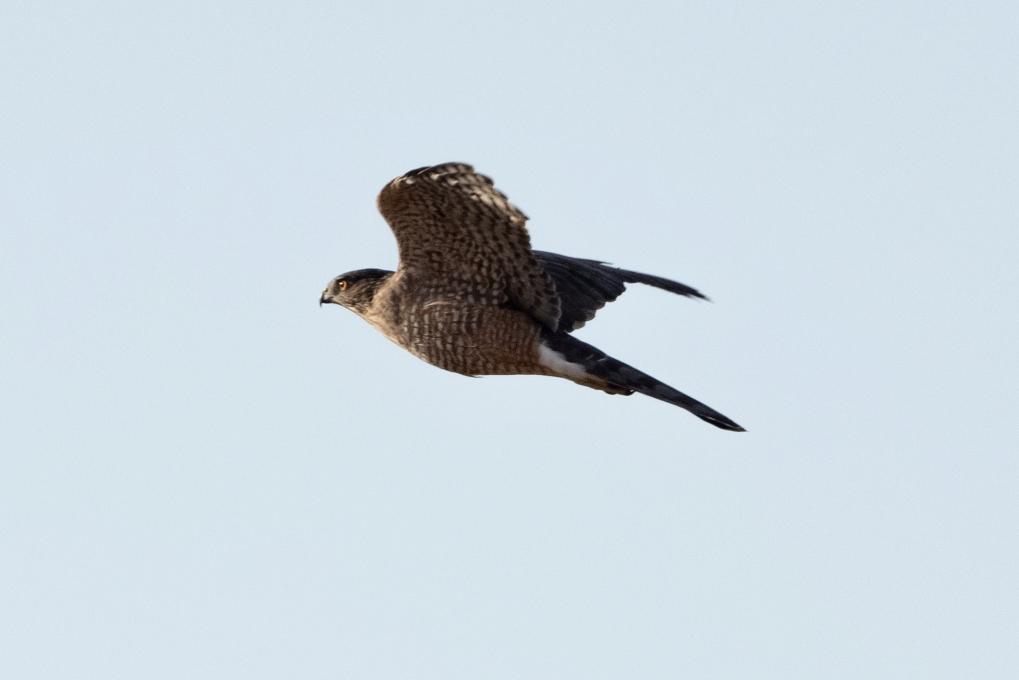

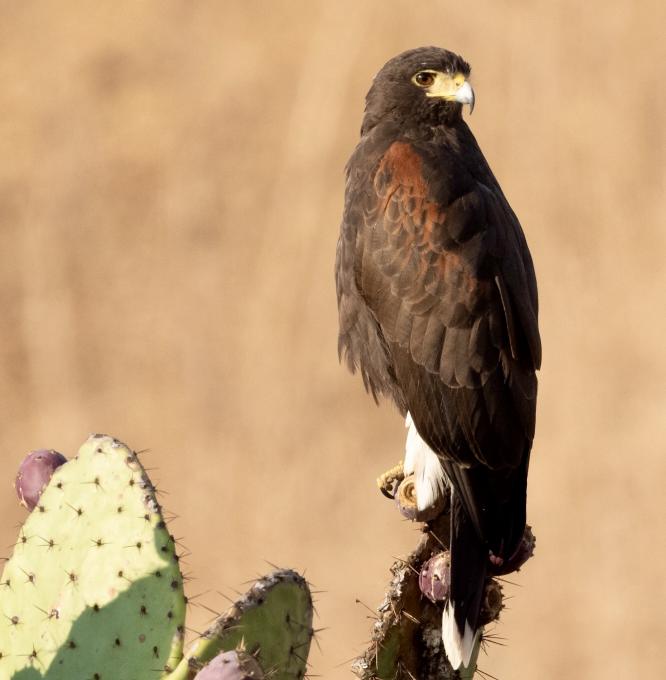
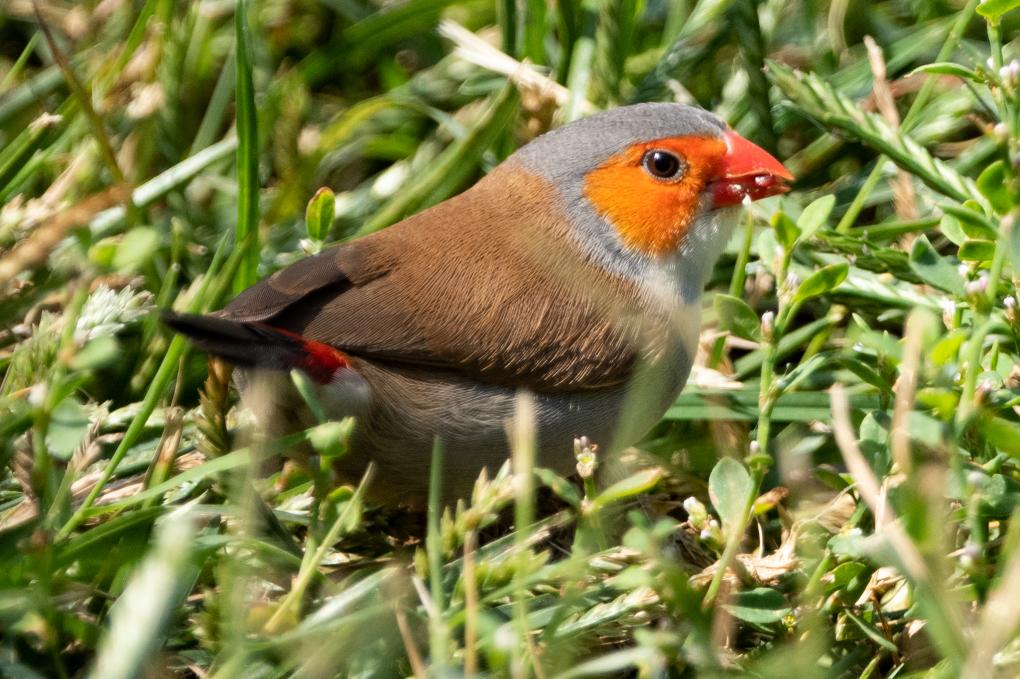
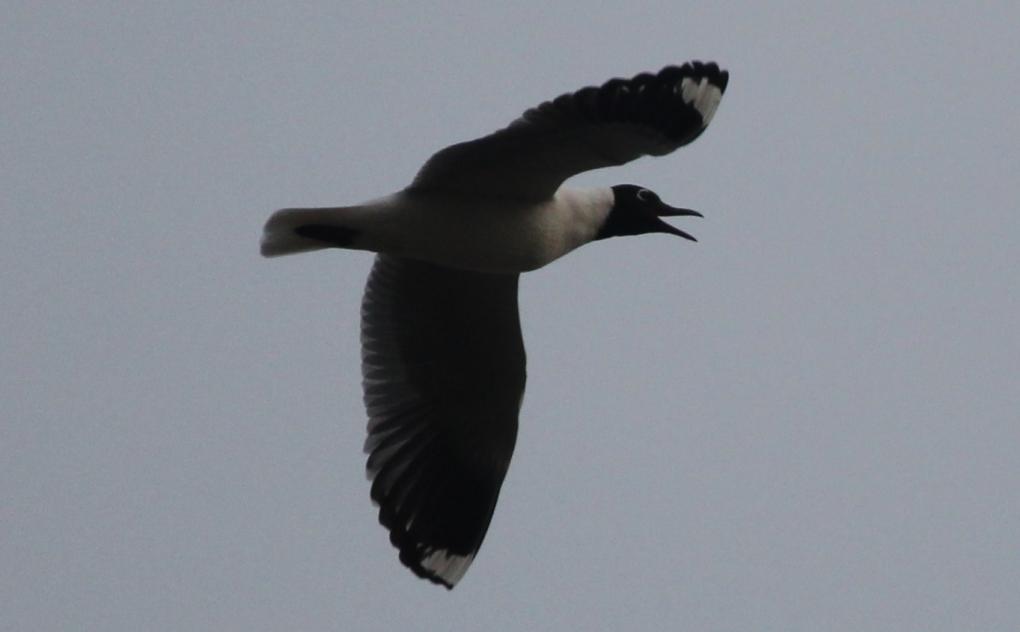 On the other hand, scrub-shrub habitat experience was frustrating. A lot of swooshing shadows of birds the size of a sparrow or smaller. Even a prepared list of most likely birds to see in the area didn’t help much. I couldn’t spot them and had to rely a lot on my hearing. The problem was I didn’t recognize the sounds I heard. The number of bird species I could identify in a scrub-shrub habitat was 9. There were a lot of flying insects and insect eating birds, like Blue and White Swallow. I even spotted a raptor (American Kestrel) sitting on the cables. I also managed to capture a couple of bush residents.
On the other hand, scrub-shrub habitat experience was frustrating. A lot of swooshing shadows of birds the size of a sparrow or smaller. Even a prepared list of most likely birds to see in the area didn’t help much. I couldn’t spot them and had to rely a lot on my hearing. The problem was I didn’t recognize the sounds I heard. The number of bird species I could identify in a scrub-shrub habitat was 9. There were a lot of flying insects and insect eating birds, like Blue and White Swallow. I even spotted a raptor (American Kestrel) sitting on the cables. I also managed to capture a couple of bush residents.
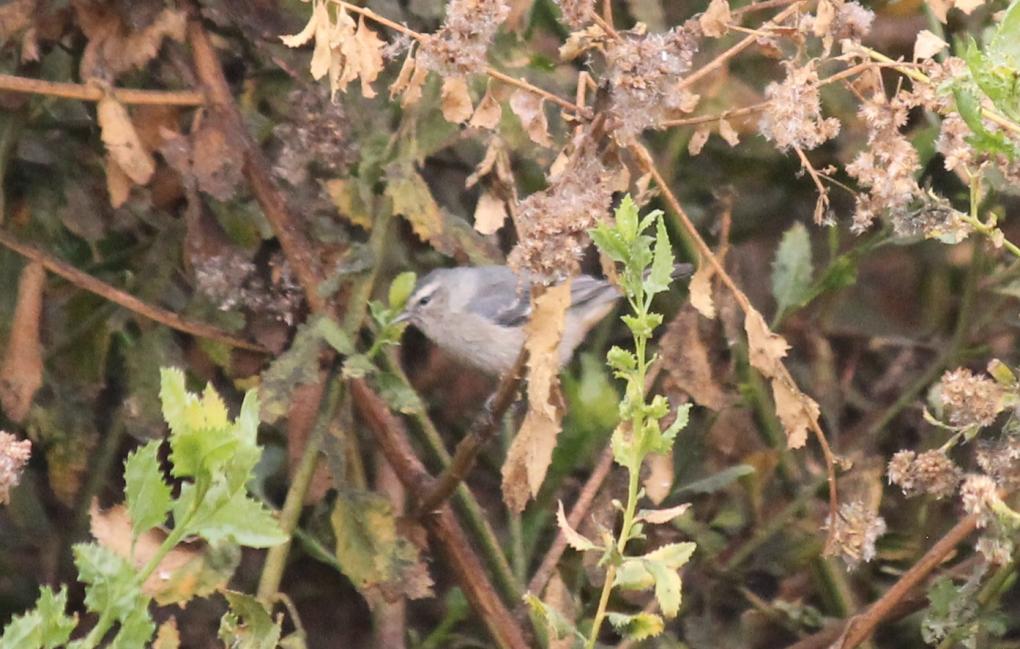 Sinereous Conebill
Sinereous Conebill
 Slender-Billed Finch
I need to do a better work on recognizing birds’ flight patterns and songs.
Activity 2:
I went as simple as ducks need lakes and woodpeckers need trees.
Down House: A big variety of Woodpeckers (woods or parks); Sevenoaks: Huge variety of Waterfowl (lakes).
Mt. Lemmon: Woodpeckers (woods or parks); Roger Road: Waterfowl (lakes).
Slender-Billed Finch
I need to do a better work on recognizing birds’ flight patterns and songs.
Activity 2:
I went as simple as ducks need lakes and woodpeckers need trees.
Down House: A big variety of Woodpeckers (woods or parks); Sevenoaks: Huge variety of Waterfowl (lakes).
Mt. Lemmon: Woodpeckers (woods or parks); Roger Road: Waterfowl (lakes). 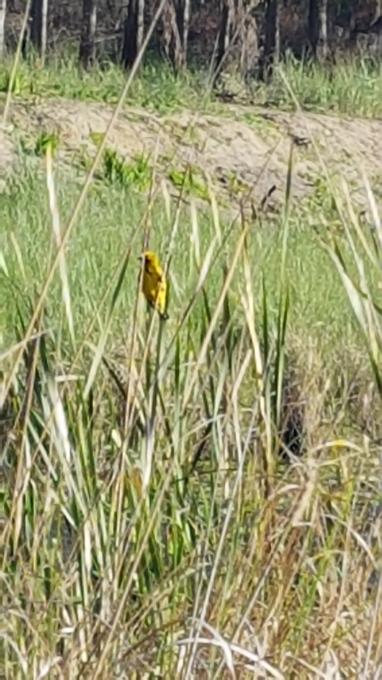 Activity 1: This is on the edge of a dam, with lots of reeds all around, the most prolific bird are the weavers, "Cape Weavers" & "Southern Masked Weavers". There are many weavers nests all along the edge of the water, hanging from the reeds. Apart from the weavers, there are" Yellow-billed ducks" and they forage for plants and invertebrates, other birds are the "Eurasian Moorhen" and the "Levaillant Cisticola" The Levaillant Cisticola is a tiny little bird with a high pitched chirp, it eats short-horned grasshoppers, beetles, weevils & flies . I have seen a pair of "White-faced Whistling-Ducks" which are uncommon in my area, a striking duck and apparently feeds at night, they dive down to obtain their food, mainly feed on underwater tubers, also molluscs and small aquatic animals.
Vineyards - The "Cape Francolin" walks between the vine rows , the male can weigh up to 980g they eat invertebrates and fallen fruit, then the "Southern Fiscal", perches on the wire holding up the vines and then swoops down on insects or small vertebrates they then impale their prey on a thorn or piece of barbed wire and tear off pieces of flesh. Then there are two types of the waxbills, the "Common Waxbill" & "Swee Waxbill" tiny finches with short wings, normally in flocks found on the vines and on the ground around the vines, they feed on grass seeds and insects especially during the breeding season.
Activity 1: This is on the edge of a dam, with lots of reeds all around, the most prolific bird are the weavers, "Cape Weavers" & "Southern Masked Weavers". There are many weavers nests all along the edge of the water, hanging from the reeds. Apart from the weavers, there are" Yellow-billed ducks" and they forage for plants and invertebrates, other birds are the "Eurasian Moorhen" and the "Levaillant Cisticola" The Levaillant Cisticola is a tiny little bird with a high pitched chirp, it eats short-horned grasshoppers, beetles, weevils & flies . I have seen a pair of "White-faced Whistling-Ducks" which are uncommon in my area, a striking duck and apparently feeds at night, they dive down to obtain their food, mainly feed on underwater tubers, also molluscs and small aquatic animals.
Vineyards - The "Cape Francolin" walks between the vine rows , the male can weigh up to 980g they eat invertebrates and fallen fruit, then the "Southern Fiscal", perches on the wire holding up the vines and then swoops down on insects or small vertebrates they then impale their prey on a thorn or piece of barbed wire and tear off pieces of flesh. Then there are two types of the waxbills, the "Common Waxbill" & "Swee Waxbill" tiny finches with short wings, normally in flocks found on the vines and on the ground around the vines, they feed on grass seeds and insects especially during the breeding season.